Panama, as you may already know, boasts an incredible biodiversity, from its national treasure, the Harpy Eagle, to the nearly extinct Golden Frog. Amidst these colourful species, one creature, mighty and fierce, rarely makes it into your nature field guides. No one even in the Smithsonian Tropical Research Institute based in Panama has ever studied it. Perhaps its lack of attention is due to its commonness, but then again despite its omnipresence across the country, you sometimes only see glimpses of its colourful display as it flies past your eyes. More likely, people avoid dealing with this monster because they fear it. Ladies and gentlemen, allow me to introduce you to the most spectacular beast of all, the Diablo Rojo.
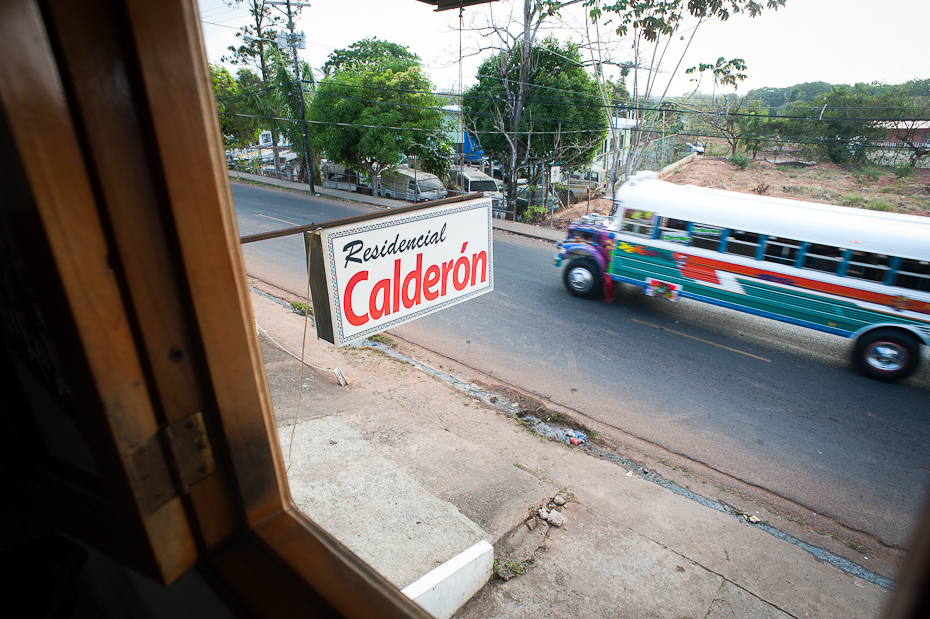
A glimpse of a Diablo Rojo.
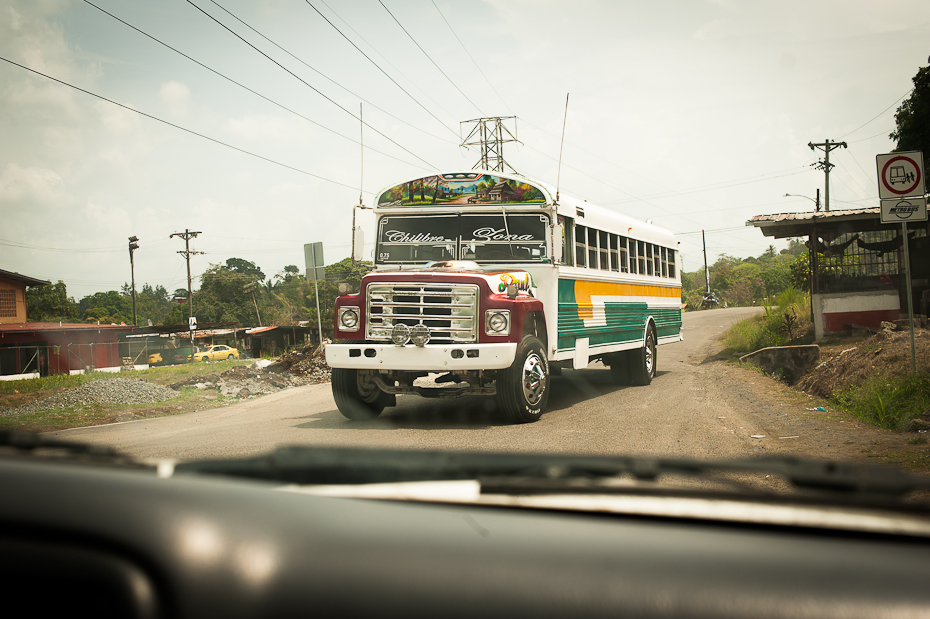
A near-death experience.
Have you been avoiding Isla Coiba fearing the sharks lurking in its deep waters? Never been to the Darién province because of its notorious reputation for kidnappings and decapitations courtesy of the lingering Colombian guerrilla? And is it the piercing crocodile eyes shining through the night that are preventing you from skinny dipping in the Chagres river? My friends, these are the least of your worries, for the majestic Diablos Rojos will crush you without mercy anywhere you want at anytime of day.
For those who aren't acquainted with this species, let me describe it to you in its most glorious evolved form. A long time ago, they were yellow innocent buses transporting happy students, but now the Diablos Rojos are the revamped versions of old buses discarded by and brought over from the United States. They are zombies of the road, resurrected from the depths of junkyards, now wandering brainlessly on the roads, with nothing capable of killing them. Behind layers of clown-vomit colours are obnoxious lights that can be fully appreciated only during nighttime encounters.
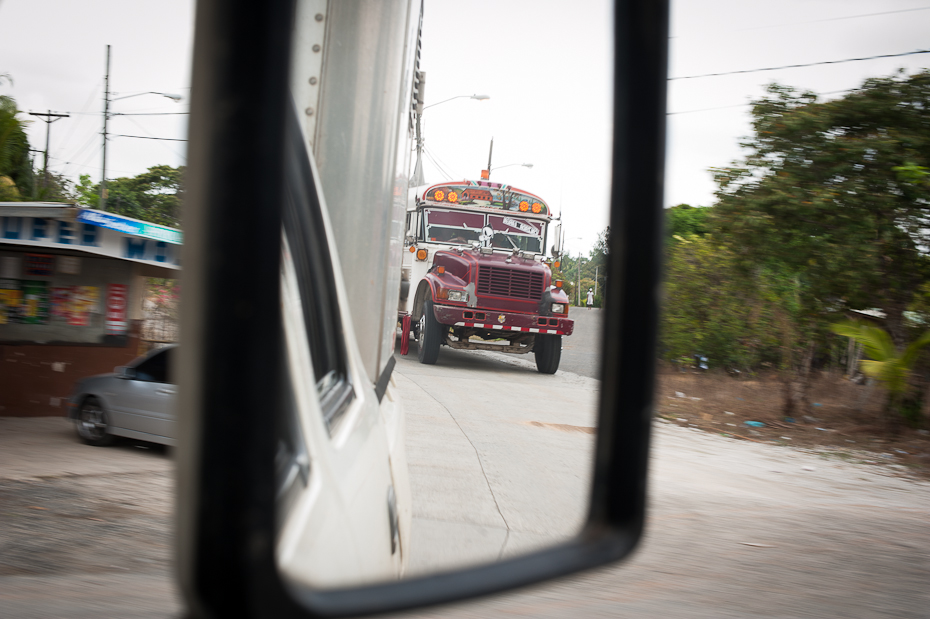
One of the scariest sights in Panama. A Diablo Rojo behind you.
Many people confuse the Diablo Rojo with just the actual bus. In reality, this is just its exoskeleton and the true beast is made of two additional parts: its driver, usually a man, sometimes probably blind, with no regard for human lives, as well as his side-kick, a human megaphone standing by the wide-open door in charge of shouting the destination of the bus repeatedly (even though it's written on the bus) and collecting the quarters from passengers. The passengers, by the way, are not the Diablos Rojos' hopeless prisoners, although it may seem that way. They are people who have chosen the dark side, opting to become part of the beast in order to avoid facing it as adversary. For them to be accepted by the Diablos Rojos they must sit still in the deafening reggaeton music.
I have seen even the most experienced Panamanian taxi drivers cower in fear when faced against the Diablos Rojos. It starts with the taxi driver shifting uncomfortably in his seat after spotting the Diablo Rojo behind him. He checks his mirror twice as often as he needs to. A bead of sweat appears on his temple. In his head he is praying - perhaps these are his last moments before the mammoth cold-bloodedly runs him over. Please be reminded that these are Panamanian taxi drivers, among the most aggressive drivers of all, capable of blazing through traffic, and with an impressive neglect of safety. And yet they are no match for the gargantuan devils. As the Diablos Rojos speed past them, blasting their retinas with the obnoxious bright lights in their process, they let out a large sigh for the devils have spared them a life.
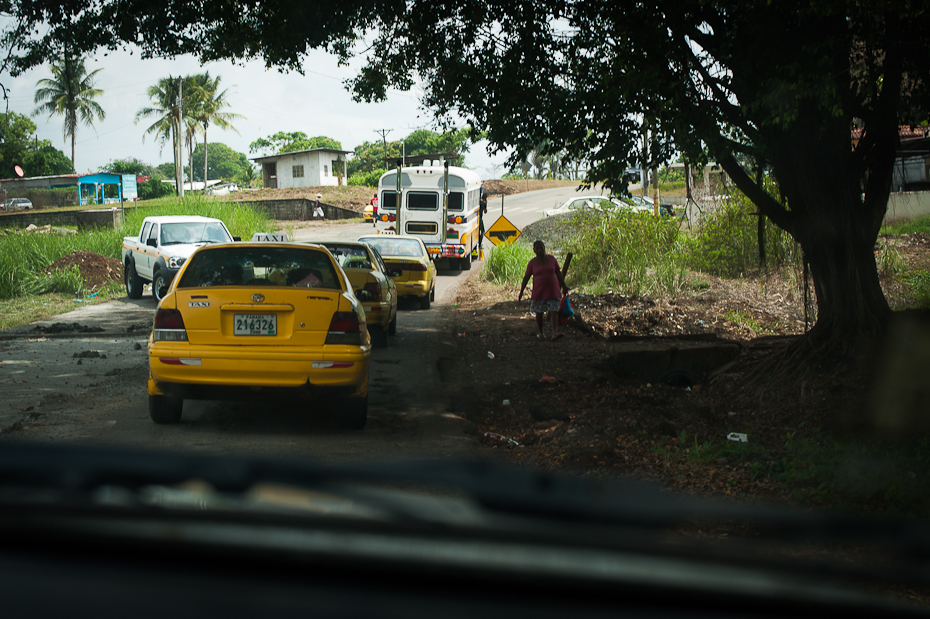
Here we see not one, not two, but three taxis waiting patiently behind the Diablo Rojo. Please realize that if this was any other vehicle they would have blew past it a long time ago. Also, if you look closely, you will see the human megaphone peaking out of the door, looking for the next victims.

Please appreciate the size of this monster. I think I saw a tear run down the taxi driver's face when we drove past him.
You may now be wondering how Panama has become this way, with hooligan buses ruling the streets. To understand this, you must look at the Diablo Rojo's recent evolutionary history. Before the infamous name was earned, the buses were more civilized. Regular citizens purchased old school buses for several thousand dollars, and the government then assigned them a route for them to take. In these ancient times, the drivers probably drove the buses at normal speeds, had maybe a few paintings on them and maybe, just maybe, followed a schedule. This ancestral state of the Diablo Rojo was well adapted as it was but with the increasing costs of living in Panama it became inefficient. Over time, they evolved multiple adaptations to overcome these economic difficulties. First, cutting the travel time in half by ignoring speed limits and stop signs allowed them to double their salary. A second adaptation was to cram as many people as possible in the bus to squeeze the most quarters in a day as possible. Two-person seats became three-person seats, and the middle aisle looked more and more like a rave. Who cares about safety anyway? Finally, the addition of unique bright obnoxious colours is thought to play a role in the mating process of the Diablos Rojos, but may also help passengers identify the buses from long distances to flag them down. Today, the only ones remaining are the most fit ones that have mastered the essence of Diablos Rojos, and any intermediate form has been eliminated.
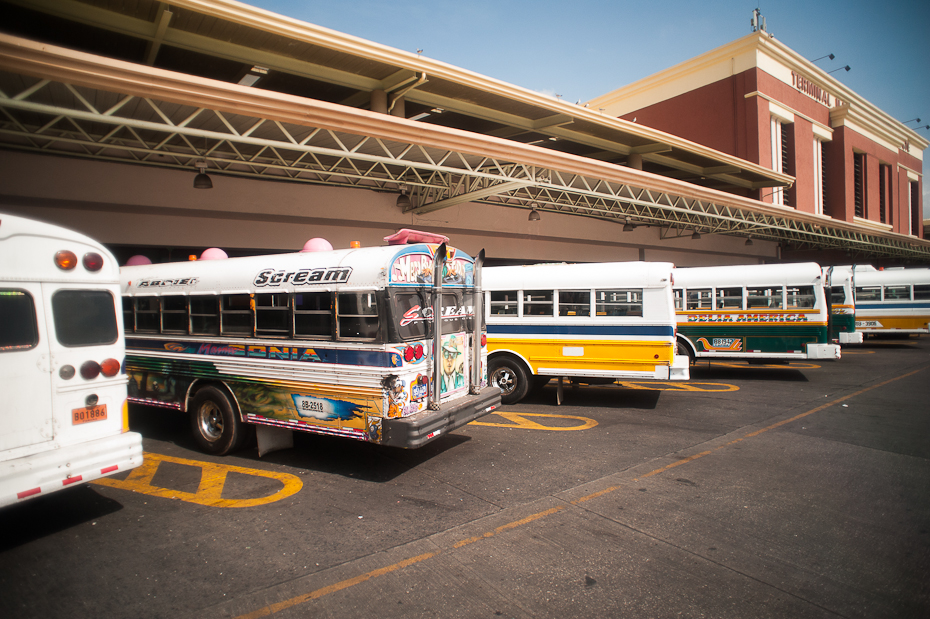
This was a close call. I stumbled onto their lair but managed to escape unscathed.
Unfortunately the Diablo Rojo is now threatened since the appearance of the MetroBus. In my recent travels I have seen their numbers dwindle down to a point where I can only hear their irritating loud horns 50 times a day. If you ever stop by Panama, hop onto one of these for the wildest adventure of your life, an experience that may forever disappear as the Diablos Rojos go extinct.

